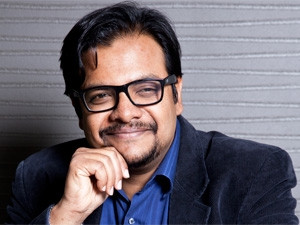
A Gartner report by Hung LeHong published earlier this year stated that much of the value of the Internet of Things (IoT) will come from the data it will generate. This, the report said, will make big data analysis a cornerstone of the success of the IoT, and a clear reason for CIOs to be involved.
Brainstorm spoke to three CIOs about what level of strategic thought they've given to the IoT, and how they'll deal with the volumes of data it will doubtless generate.
"Coined at the Massachusetts Institute of Technology's Auto-ID Lab, [the Internet of Things] originally referred to the concept of radio-frequency identification tagging of objects in the physical world," says Morn'e van Heerden, CIO at Primedia Out of Home.
"In the past year, however, this definition has rapidly expanded to include communication among a global system of interconnected computer networks, sensors, applications and devices all using the Internet protocol. Even the most conservative projections predict that, by 2015, 75% of the world's population will have access to the Internet. So will an estimated six billion devices."
He says the billions of sensors and connected devices that make up the IoT hold the potential to be a powerful source of business insights and competitive advantage for any organisation.
"We're talking about an effective and huge machine-to-machine conversation at this stage," adds Dinakar Vasanthakumar, Group CIO at the Logikal Group. "This gives rise to an immense amount of usable and dissectible data, something that can not only give a team or an organisation a perspective about themselves, but of the competition, of the way their market is hybridising, apart from providing proactive information for course correction. So you're now getting the fourth dimension of information."
The data that's produced by this kind of interaction far exceeds our current capacity for interpreting it, and this is where the challenge of big data comes into play.
"These devices are not only becoming faster and faster, but also more intense in their use of data," says Arthur Madonsela, CIO at the Council for Scientific and Industrial Research. "So for IT houses, this has major implications both in terms of the possibilities it affords us and the challenges that emerge."
Balancing act
Van Heerden believes that as more devices become Internet-enabled, CIOs will have to accept the strategic imperative for using the principles of the IoT to gain greater insight into their operations, while creating new opportunities to interface with customers.
"It also forces you to consider IT assets and platforms not owned or controlled directly by the corporate IT department - a concept still difficult for some IT executives to grasp," he says. "In some cases, it may even imply that you have to re-align your strategic objectives for deploying Internet-enabled platforms by making the data they generate accessible to multiple applications, most of which may not be directly owned or controlled by your enterprise."
Even the most conservative projections predict that, by 2015, 75% of the world's population will have access to the Internet. So will an estimated six billion devices.
He says this means that, as CIO, he has to balance the governance and compliance concerns of his organisation with the lucrative new offerings that become possible when the physical world is merged with the virtual world.
"Importantly, though, the IoT... holds the potential to create an order of magnitude more information that's available to enterprise applications," he says. "This could empower enterprises with much more granular information about where everything is that's important to them - and their customers - but demands increased awareness of data governance and business intelligence principles."
Quantum digitisation
In Madonsela's industry - science and research - a huge volume of data is generated on any given day. Linked to the IoT, therefore, is the issue of data and information management.
"Are there any benefits to this? I think so, both IT-specific, but also in business, medicine and even in our homes," he says. "I think that, given the advances in technology, it means we'll be able to gather significantly larger data sets a lot more efficiently, and effectively interrogate both the data and devices that produce such data.
The whole phenomenon of the Internet of Things means there will be 'quantum' digitisation.
"Put differently, the whole phenomenon of the Internet of Things means there will be 'quantum' digitisation, which, in turn, means we'll better reap the benefits of customisation of data and various services that are based on it; things like better business intelligence, predictive analytics and real-time decision-making."
He adds that this comes with the somewhat odd question that when a device has human-like capabilities, who is the responsible party?
Event horizon
Vasanthakumar says that while leveraging big data may present its challenges, there are upsides.
"For any CIO, although it seems like an uphill battle, [adopting and leveraging big data] is an interesting exercise of better control, better dissemination, better use, and finally, better appreciation of information," he says. "There will certainly be a continued reduction in workforce supporting IT while converting it into a true service provider. On the other hand, I see this creating a few million jobs for IT consultants."
He believes that this will further hybridise into a sustainable artificial intelligence. "With everything being both a generator and a consumer of information, this will give rise to collective intelligence driving the entire scheme of things. We are at the event horizon."
First published in the July 2013 issue of ITWeb Brainstorm magazine.
Share